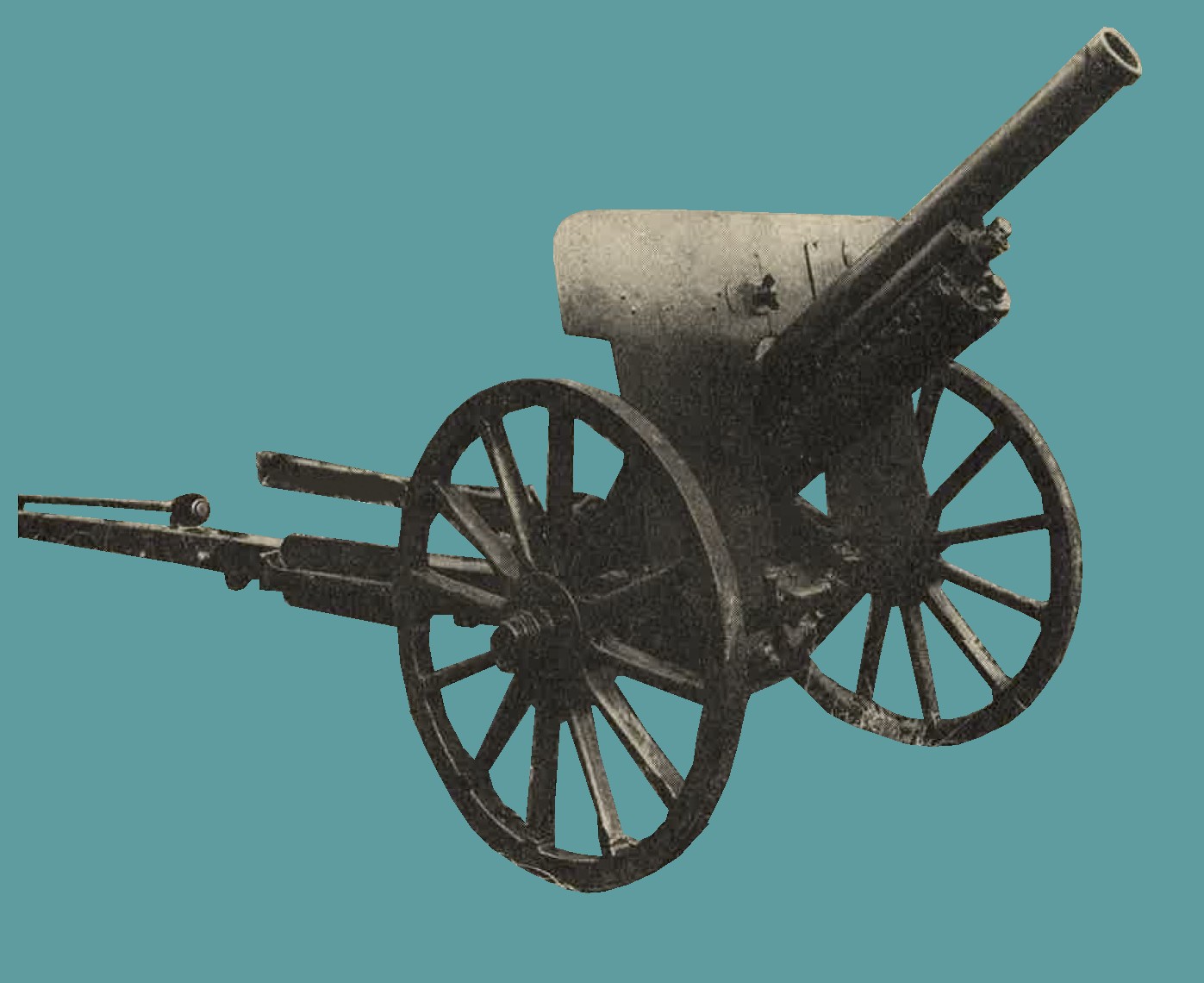CHAPTER 9 - WWII JAPANESE ARTILLERY AND CHEMICAL

SECTION III - WWII JAPANESE ARTILLERY
1.GENERAL
Between 1925 adn 1936, all Japanese artillery pieces were either redesigned or replaced by newer designs. An examination of a majority of the designs known to exist leads to the belief that the following features will be incorporated in any newer designs produced since 1936, although no weapon over 47-mm in size and bearing a model date later than 1936 as yet have been reported:
- Hydropneumatic recoil system.
- Use of equilibrators.
- Muzzle breaks.
- Increased muzzle velocities.
- Improved high speed mounts on all medium and heavy pieces (using either pneumatic tires or tires filled with sponge rubber).
Since Japan has had access to German weapon design for some years, it may be assumed that the Japanese weapons embodying the following features may be encountered:
- Hollow charge projectiles.
- New incendiuary projectiles.
- Self propelled mounts of various kinds.
- Rockets.
2. FIELD ARTILLERY.
a. Model 94 (1934) 75-mm mountain (pack) gun.
(1) General description. This is the standard Japanese pack artillery piece (figure 216) which replaced the Model 41 mountain gun. Designed for rapid assembling and dismantling, it breaks down into 11 units, the heaviest of which weighs 210 pounds. The weapon is normally transported by 6 pack horses. It is characterized by a comparatively long split-trail hydropneumatic recoil mechanism, and a horizontal sliding breechblock. The shield is 1/8-inch armor plate.
b. Model 38 (1905) 75-mm gun.
General description.
(1) One of the early weapons of the Japanese division artillery, this weapon (figure 217) has been subject to considerable modification, and several versions are known to exist. There is no evidence that this parent model has been employed in recent operation; probably now it is regarded as obsolete (1944). It may be readuly identified by the single box trail which, by its design, considerably limits the elevation of the piece. Other characteristics are a hydrospring recoil system, interrupted screw type breechlock, and 1/16-inch shield.
2. Characteristics.
(3) Ammunition. HE and AP. |
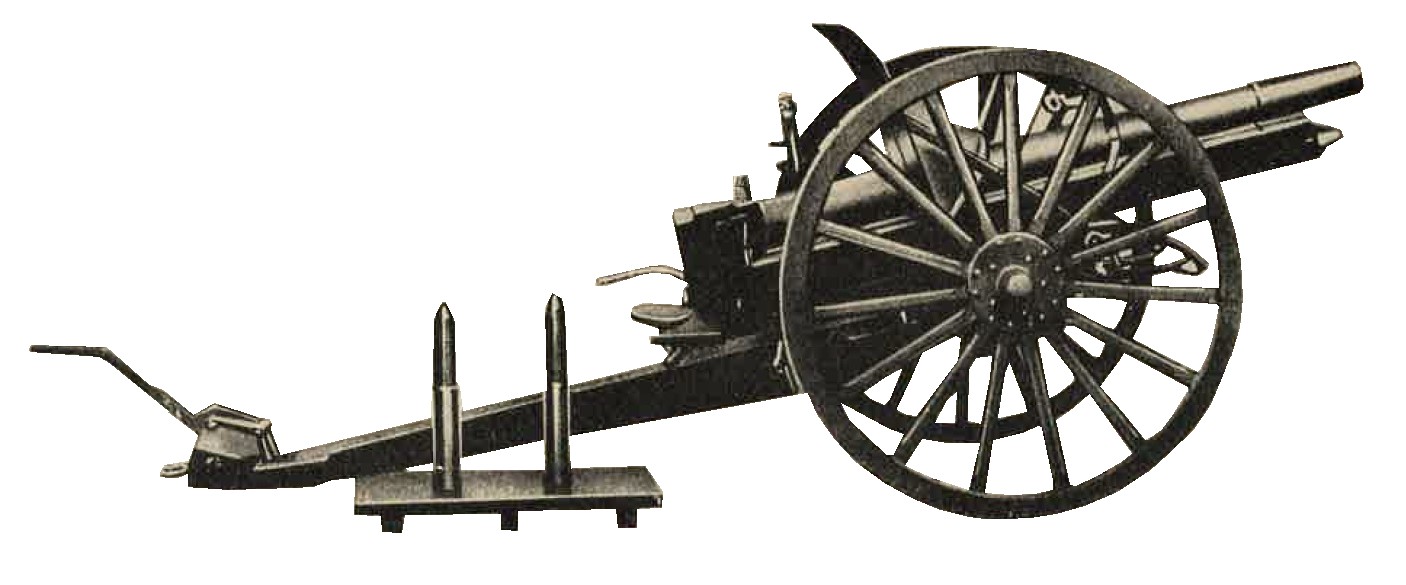
Figure 217. WWII Japanese 75-mm gun with ammunition. |
c. Model 38 (1905) gun improved (possibly 4th year model).
(1) General description. This is an improved version of the 75-mm model 38 (1905) field gun, which appears to have been entirely replaced. Modifications on the present model (figure 218) consists of trunnioning the barrel further to the rear; the addition of two spring and cable equilibrators to compensate for muzzle overhang; Replacement of the old box trail by a longer open box type through which the barrel can recoil at high elevations; change the breech to a horizontal sliding wedge mechanism, the most significant results of the above modification are a much longer range and increase rate of fire. Although reports have indicated that this weapon was to be replaced by the Model 90, the fact that the newer gun has not been encountered in any combat areas (as of 1944) indicates that this plan has not yet beeb consummated.
(3) Ammunition. HE, AP, sharpnel, smoke, star shell, and chemichal. |
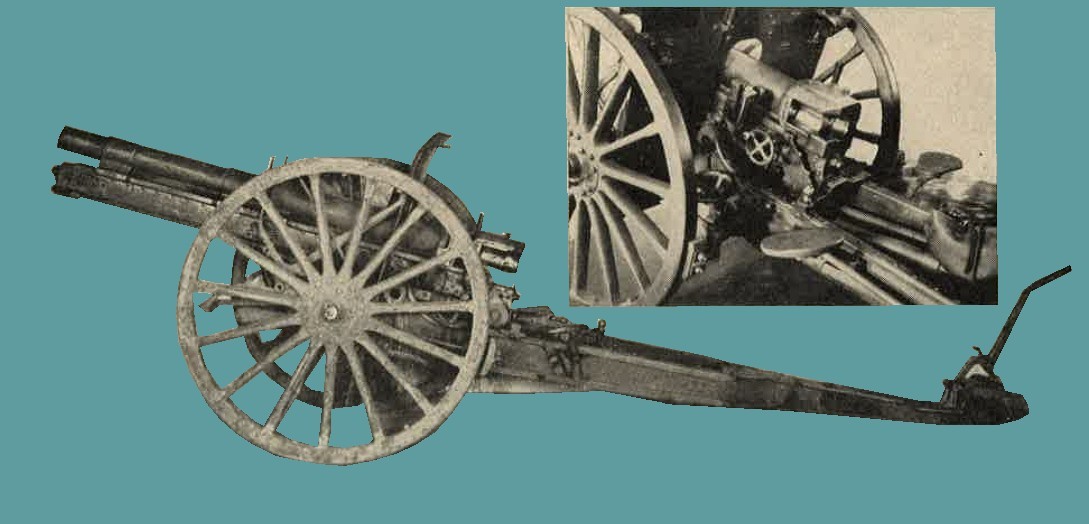
Figure 218. Japanese Model 38 (1905) gun improved (Insert shows breech mechanism). |
d. Model 90 (1930) 75-mm gun.
(1) Geenral description. Surrounded with considerable secrecy by the Japanese, this gun (figure 219) has been reported as the modern weapon of the division artillery. In 1936 it was believed to have been in process of issue to organizations, but to date (1944), it has not been encountered in any theater of war.
The gun is equipped with either pneumatic tires for motorized towing or large , steel-rimmed wheels for horse draft. It is characterized by a split trail, a horizontal sliding breechlock, and a hydropneumatic recoil system. An ususual feature is the muzzle break, which as of 1944, it had not been found on any other artillery piece.
(3) Ammunition. HE, AP, sharpnel, incendiary, smoke, star shell. |
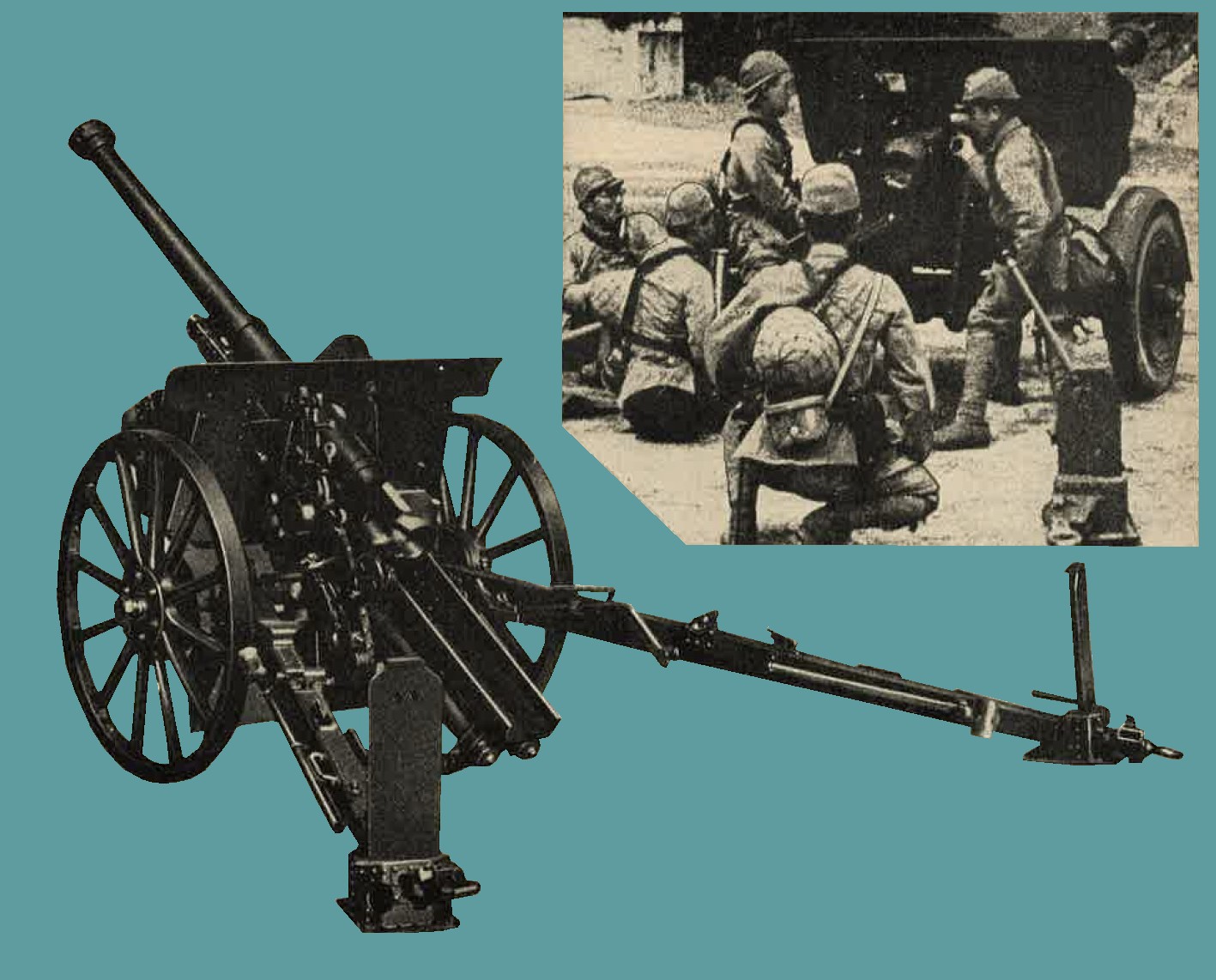
Figure 219. WWII Japanese Model 90 (1930) 75-mm gun (insert shows the weapon on a high speed carriage with pneumatic type tires). |
e. model 95 (1935) 75-mm gun.
(1) General description. The 75-mm Model 95 gun is a horse drawn (figure 220) with split trails, hydropneumatic recoil mechanism, and horizontal, sliding-wedge type breechlock. A comparison with the Model 90, designed 5 years earlier, reveals that this later weapon has only the apparent advantage of reduced weight. On the other hand, it suffers from loss of range and lower muzzle velocity. It is seemingly more rugged in construction than the Model 94 mountain gun and yet gives a lower performance than he Model 90 field gun.
The possibility therefore suggests itself that the Model 95 was not designed to replace other of these guns, but was to be used by some unit other than the field or pack artillery. It is possible therefore that it may be the new weapon of the horse artillery, replacing the old adaptation of the Model 38 with which such units previously had been equipped.
* Also reported as 9,000 meters (9,850 yards). (3) Ammunition. HE, AP, sharpnel, smoke star and chemical. |
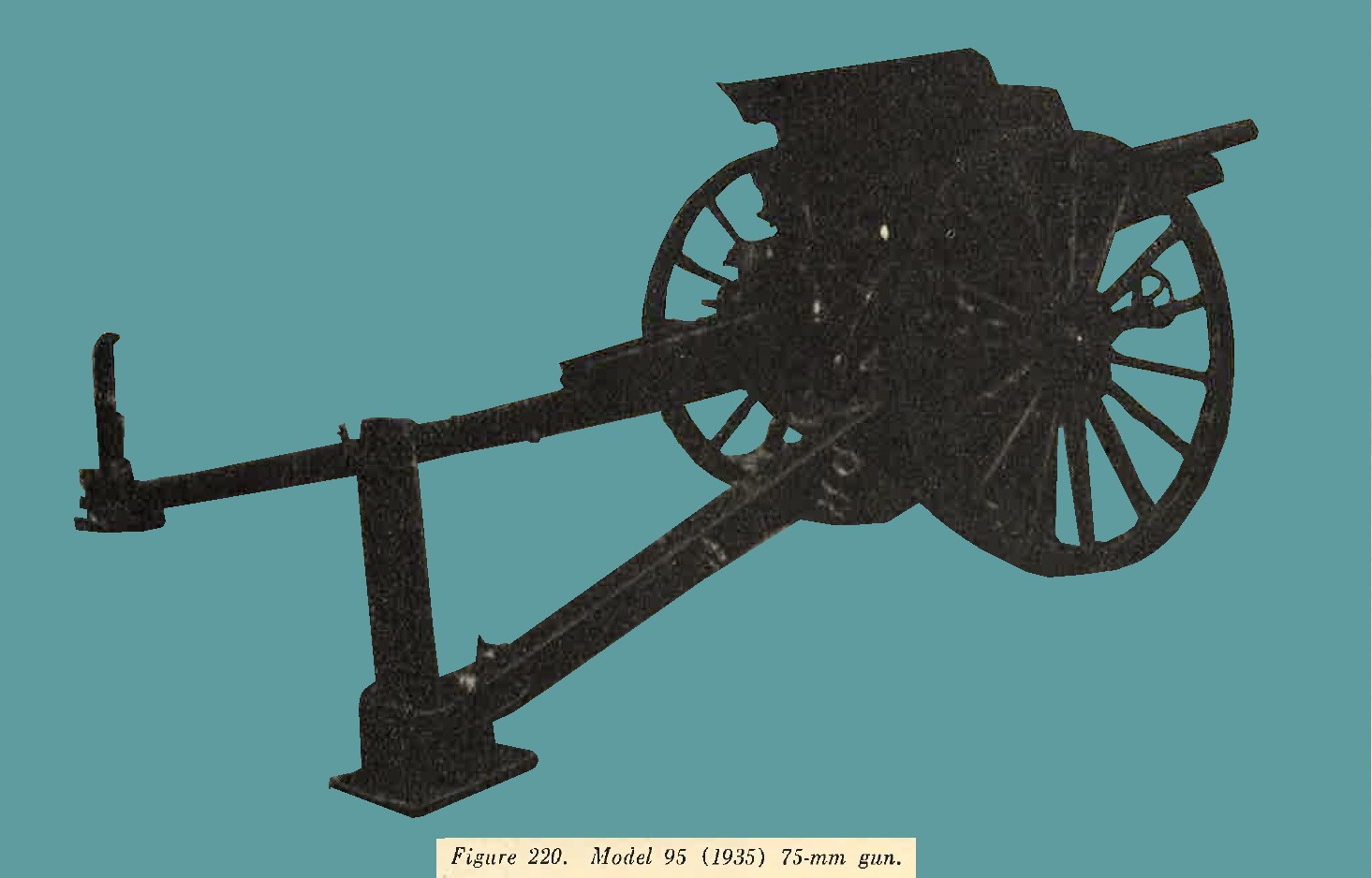 |
f. Model 14 (1925) 105-mm gun.
(1) General description. The 105-mm Model 14 (1925) gun (figure 221) is used for long range fire. There is no information, as of 1944, to show that this gun is still in production, and ir is felt that in all probability it has been superseded by the more modern Model 92 (1932).
This artillery piece was mounted on heavy wooden wheels, the weapon is normally tractor drawn, and is capable of being moved at a maximum speed of 8 miles per hour. As an alternative it may be drawn by 8 horses. The weapon possesses an interrupted screw breechlock, a hydropneumatic recoil mechanism, and a split trail.
(2) Characteristics.
|
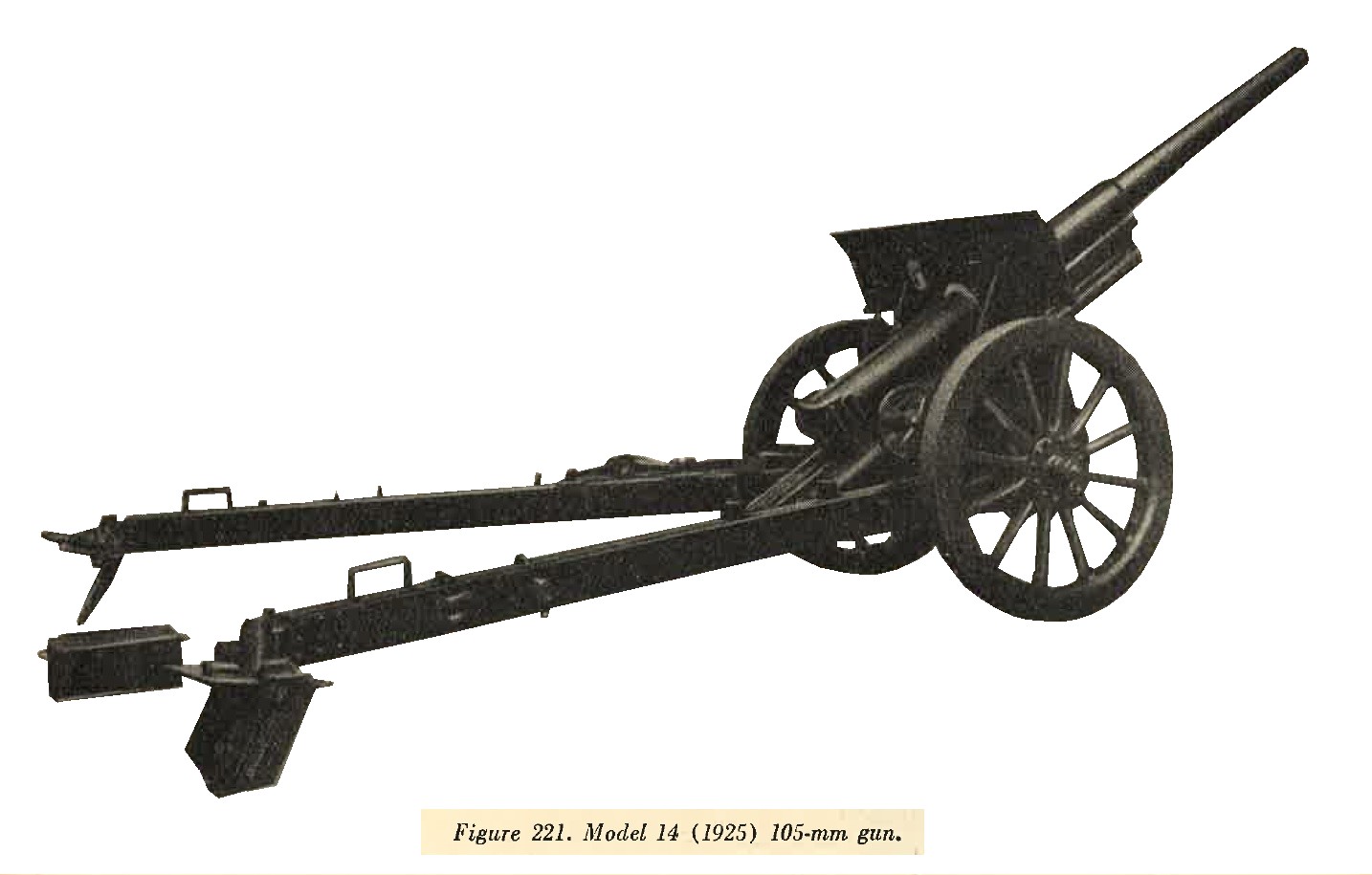 |
(3) Ammunition. Ammunition is semifixed. The following types of projectiles have been reported:
- High explosive (long pointed shell).
- High explosive.
- Sharpnel.
- Chemical.
- Armor piercing.
Time fuses are provided for the smoke, incendiary, and sharpnel projectiles. The standard Model 88 point detonating (instantaneous or delay) fuzes are used with HE and chemical shells.
g. Model 91 (1931) 105-mm Howitzer.
(1) Genral description. A light weight modern field piece (figure 222) possessing a hydropneumatic recoil mechanism, split trail, and interrupted screw breech mechanism. The weapon can be readily identified by the short barrel and long sleigh. Normally it is towed by six horses.
|
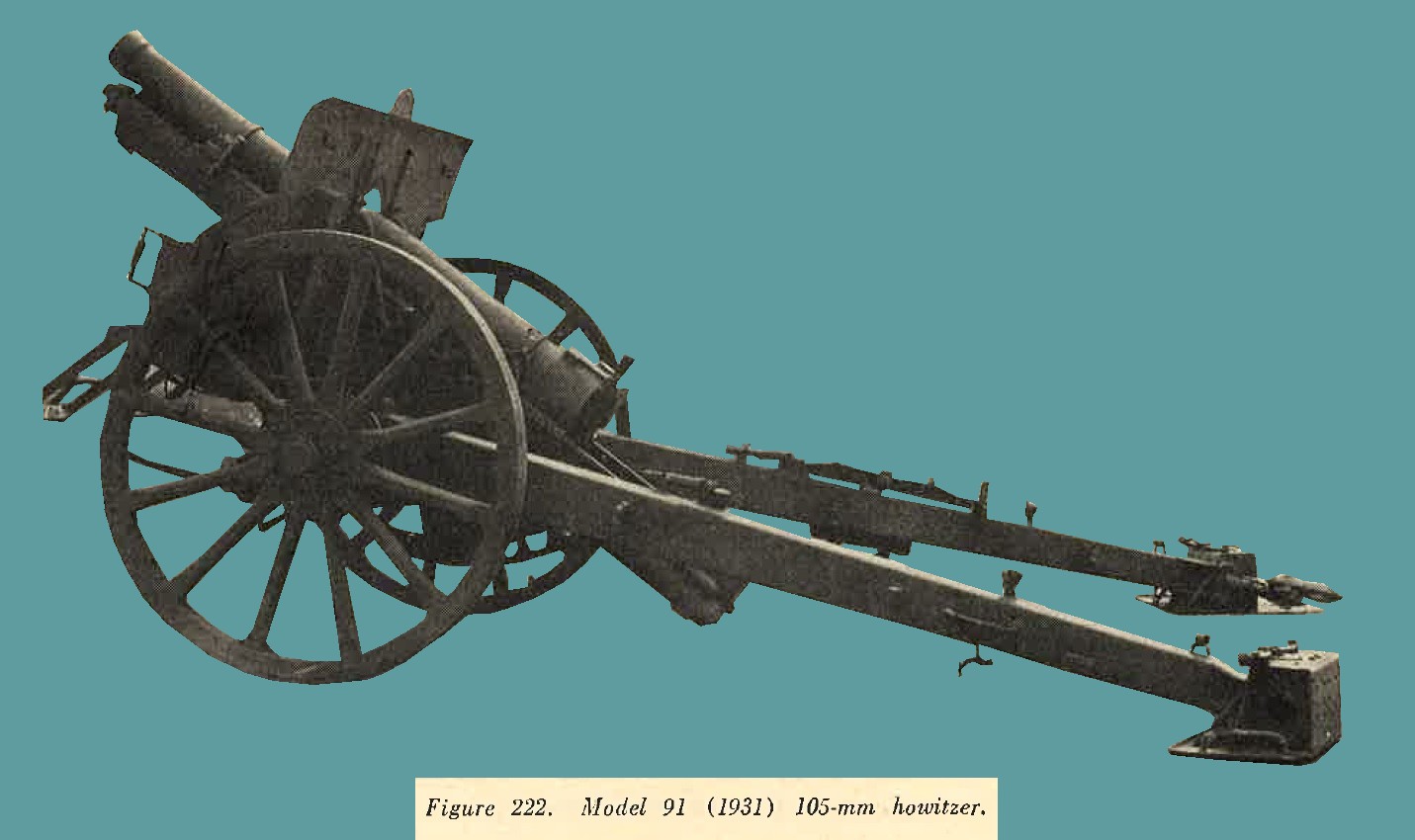 |
(3) Ammunition. Ammunition is semifixed. The following types of projectiles have been reported: - High explosive (long pointed shell).
- High explosive.
- Armor piercing.
- Sharpnel.
- Chemical.
h. Model 92 (1932) 105-mm gun.
(1) General description. It is considered that this weapon (figure 223) has superseded the Model 14 (1925) 105-mm gun. Readily recognized by its long slender barrel and trail, it has been designed [particularly for long range fire. Other distinctive features are the pronounced length of the sleigh and the three step interrupted thread breechlock. The recoil system is hydropneumatic. Mounted on heavily constructed wooden wheels with solid rubber tires, the weapon is normally tractor drawn, but may be drawn by a 5 ton truck.
|
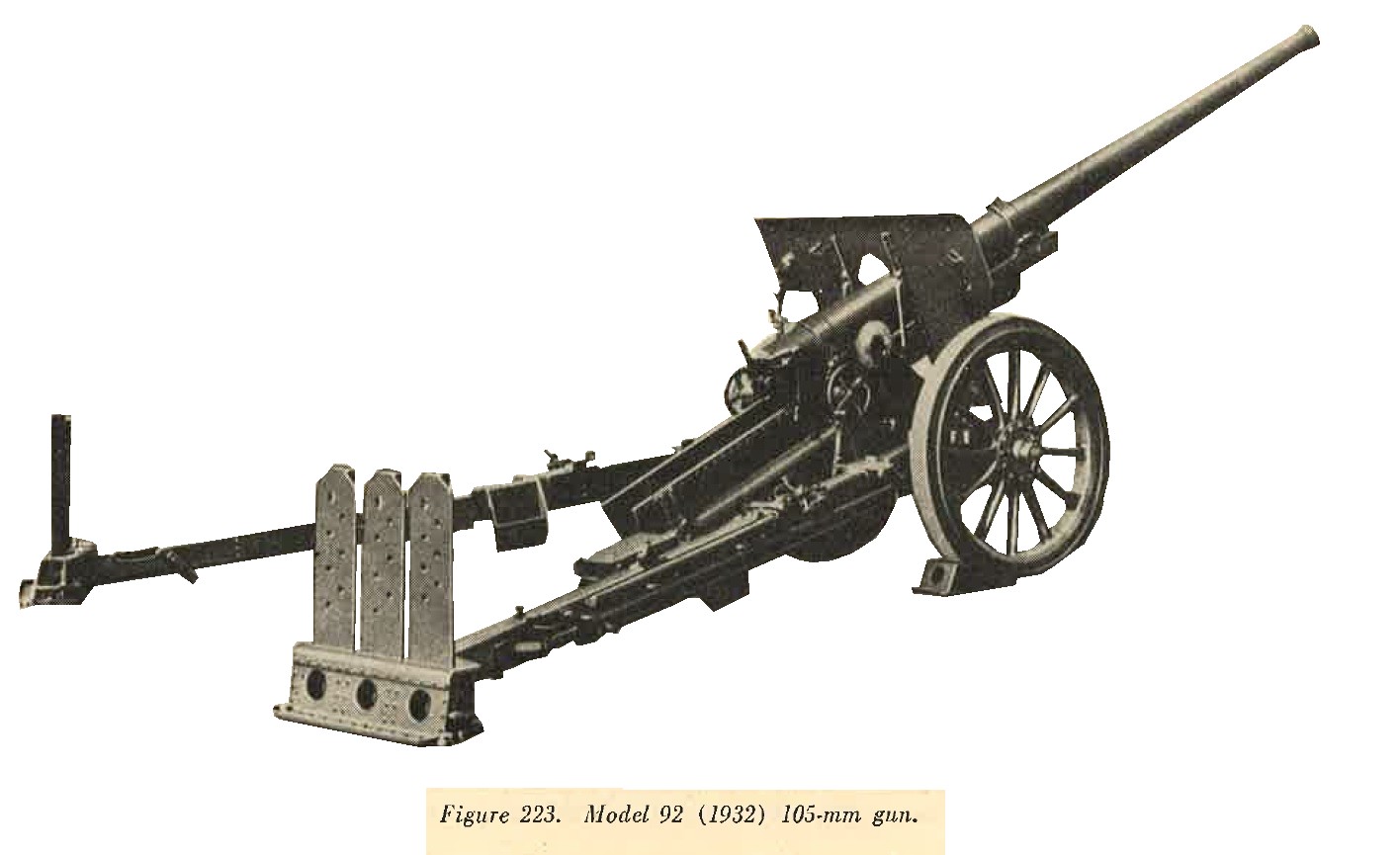 |
(3) Ammunition. Ammunition is semifixed. The following types of projectiles have been reported: - High explosive (long pointed shell).
- High explosive.
- Chemical.
- Armor piercing.
Time fuzes are provided for the smoke, incendiary, and chemical shells. The standard Model 88 point detonating (instantaneous or delay) fuzes are used with the HE and chemical shells.
i. Model 4 (1915) 150-mm howitzer.
(1) General description. One of the older type horse drawn weapons (figure 224) which nevertheless is still in service. For purposes of transportation the trail breaks in the middle. The barrel is removed from the cradle and placed on the rear portion of the trail, to which has been attached an extra pair of wheels. a limber is attached to each section, and each load may then be towed by six horses. The weapon possesses a vertical sliding breechlock, a hydropneumatic recoil mechanism, and a box type trail.
|
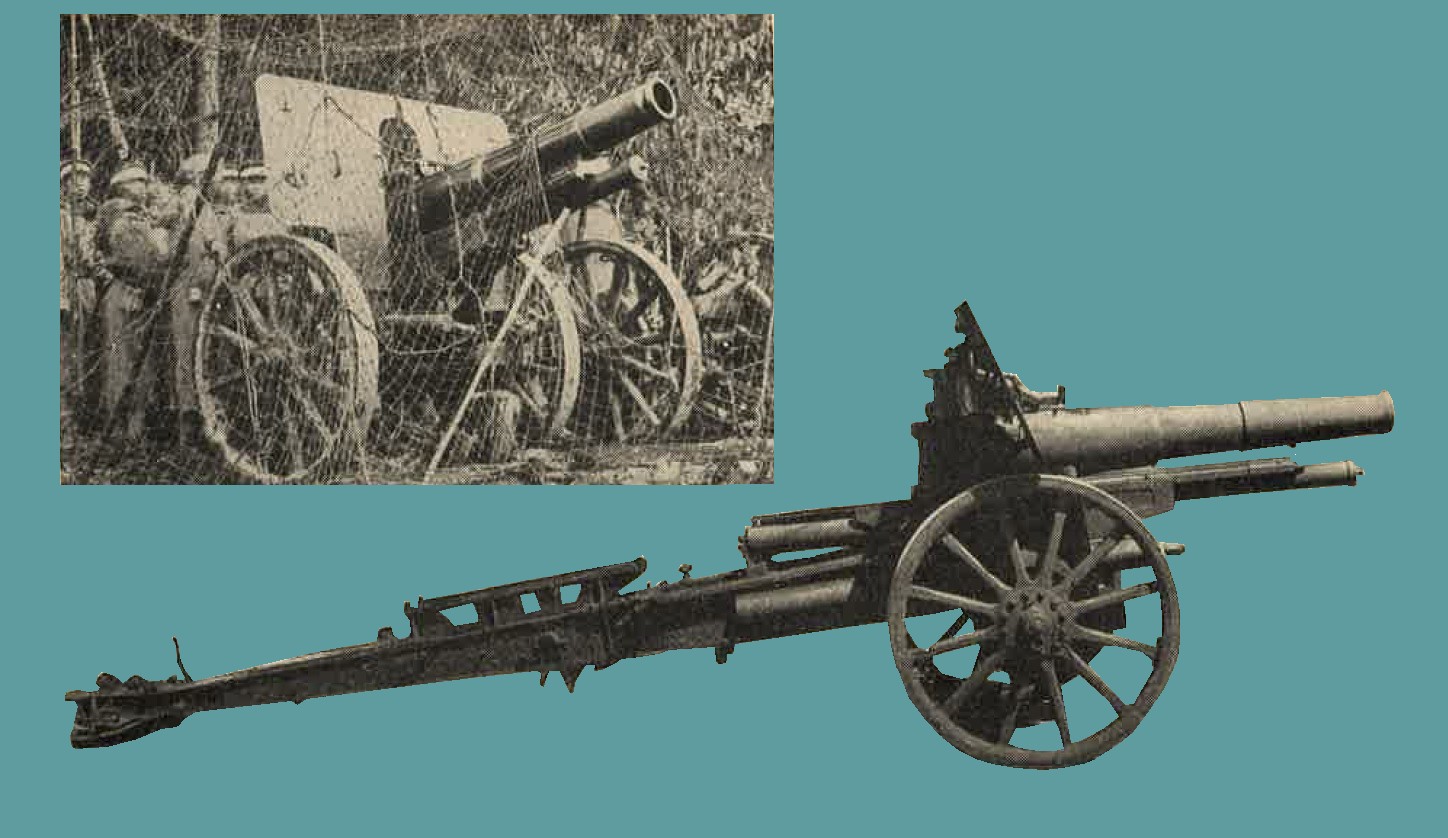
Figure 224. Two views of Model 4 (1915) 150-mm howitzer. |
(3) Ammunition. Ammunition is semifixed. The following types of projectiles have been reported:
- High explosive.
- Armor piercing.
- Sharpnel.
- Chemical.
Time fuzes are provided for the smoke, incendiary, and sharpnel projectiles. The standard point detonating (instantaneous and delay) fuzes are used with the HE and chemical shells.
j. Model 89 (1929) 150-mm gun.
(1) General description. A tractor drawn weapon (figure 225) of improved design employed for long range fire. it is designated by the Japanese Army as a heavy field artillery piece. Although manufactured was commenced in 1929, it is believed that issue was not completed until 1937. For purposes of transportation the barrel is removed from the cradle and placed on a separate carriage. The weapon has a split trail, hydropneumatic recoil mechanism, and an interrupted thread block.
(3) Ammunition. AP, HE, Sharpnel, HE (long pointed shell). |
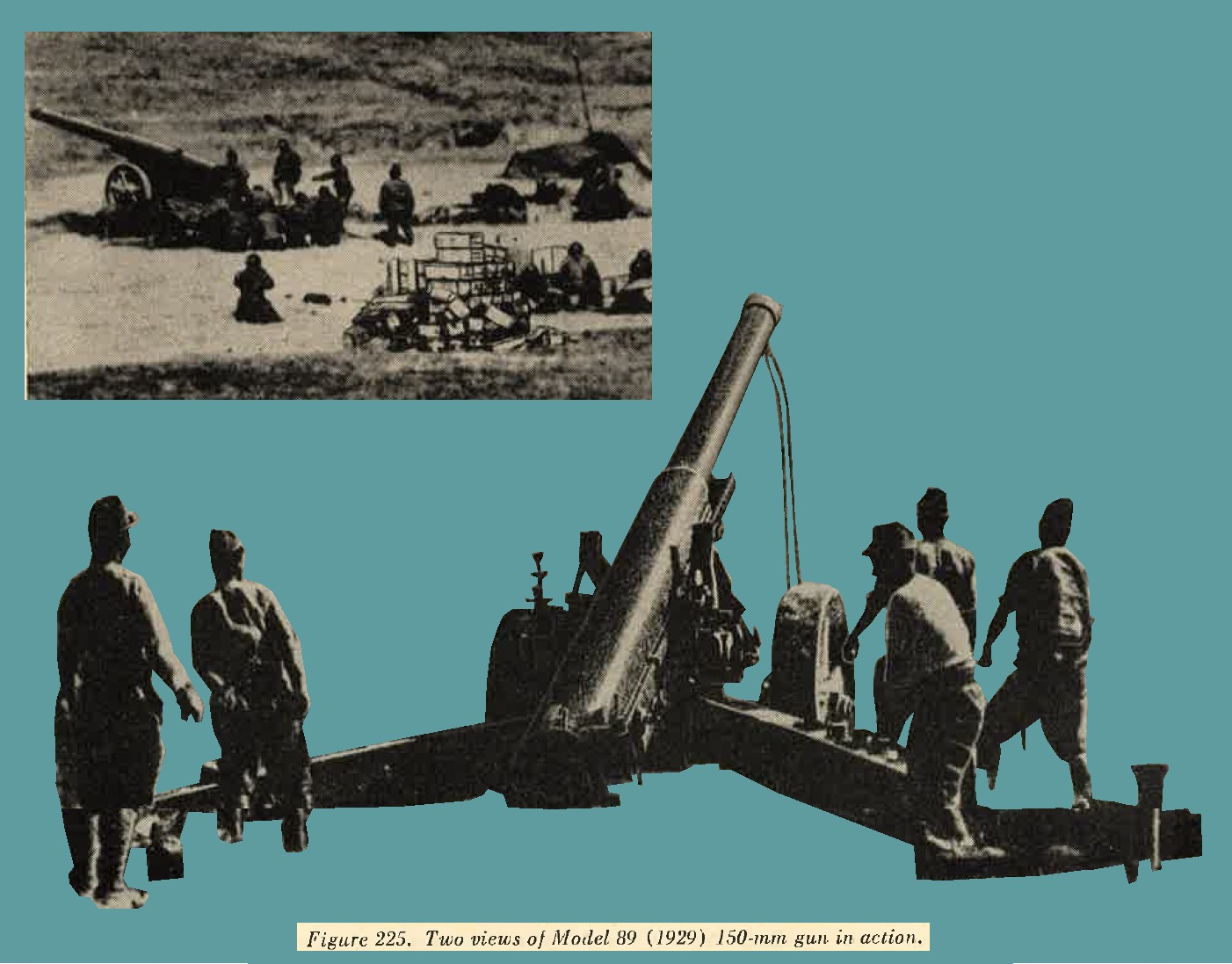 |
k. Model 96 (1936) 150-mm Howitzer.
(1) General description. A well designed and effective weapon (figure 226) which is, to date (1944) the most modern of its type known to be possessed by the Japanese. It is reported that three modifications exist. Variations, however, are believed to be extremely slight. Mounted on sturdy, rubber shod, wooden wheels, the weapon is normally tractor drawn. One of the outstanding characteristics is the extreme elevation of 75 degrees which can be obtained. This, however, can be used only when a deep loading pit is dug beneath the breech. It is probable that the weapon could not be fired at an elevation greater than 45 degrees without construction of such a pit. Other features are a long split trail, interrupted thread breechlock, and a hydropneumatic recoil mechanism.
(2) Characteristics.
(3) Ammunition. Semifixed; HE, AP, Sharpnel, smoke, incendiary tracer. |
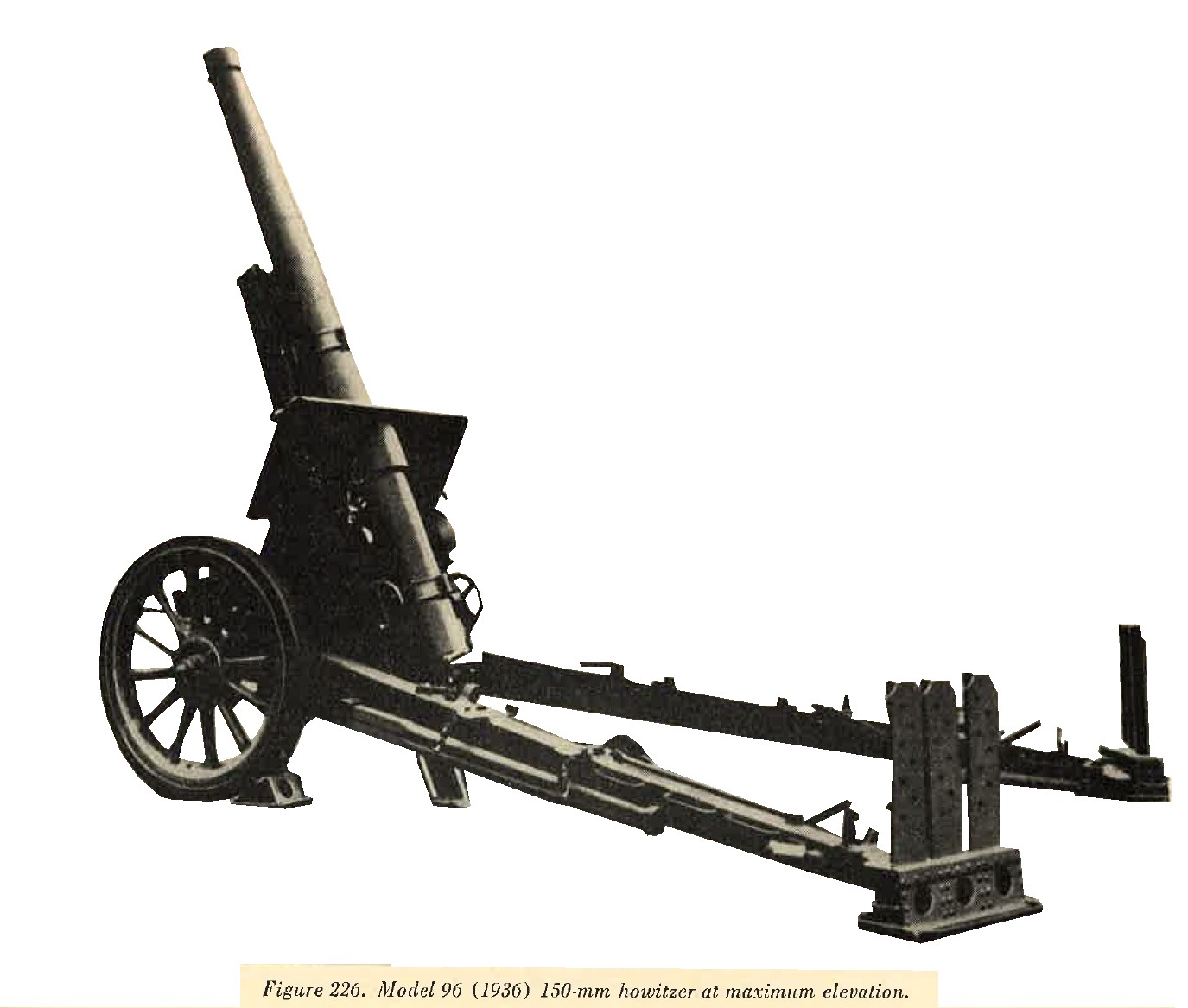 |
l. Model 45 (1912) 240-mm Howitzer.
It is reported that this piece has a maximum range of 11,000 yeards, firing a semifixed round weighing approximately 400 pounds. It is broken down and transported on 10 vehicles. (See figure 227).
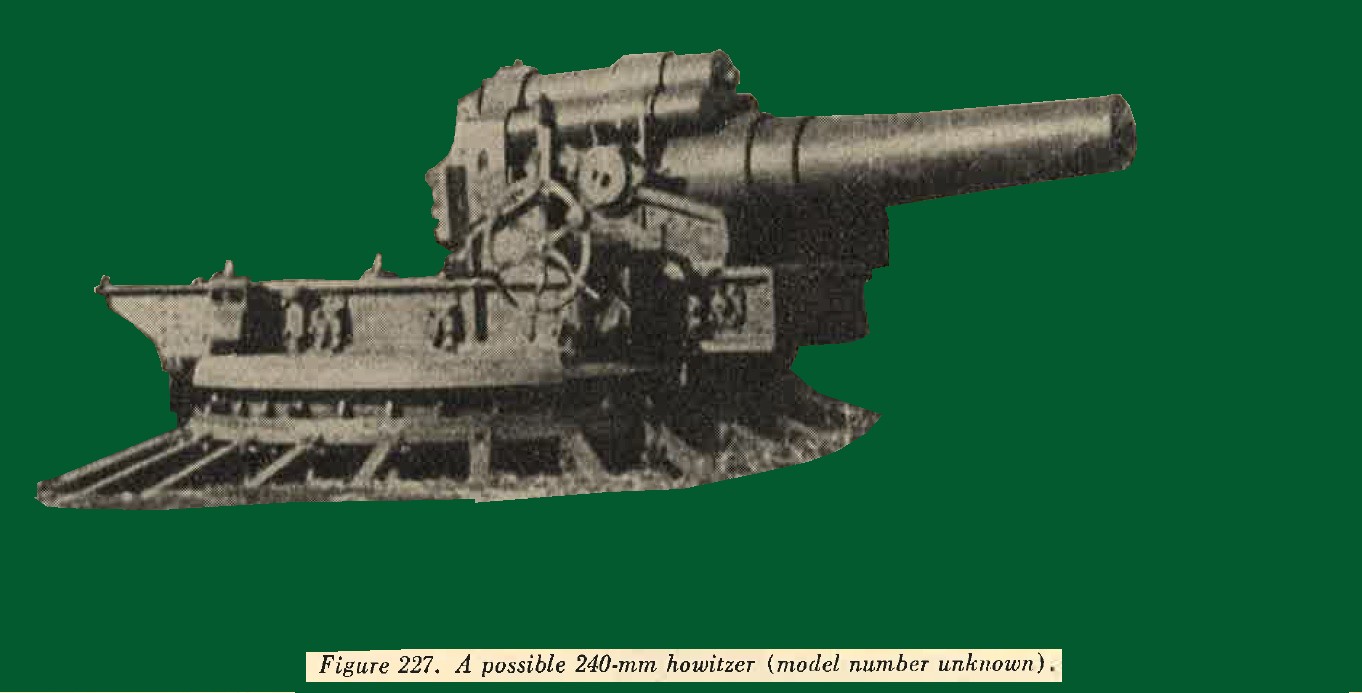
m. Miscellaneous heavy artillery.
in recent years the Japanese have bought 17-cm, 21-cm and 24-cm weapons from Germany and therefore Japanese copies of these may be expected. In addition to the above, the following heavy artillery pieces have been reported but none have been captured, therefore the characteristics given below have not been confirmed.
| Caliber | Type | Length of bore | Muzzle velocity | Type of shell | Weight of shell | Maximum range | Elevation | Weight in action | Remarks |
| 24-cm | Railway gun | ----- | 3,560 ft/sec | HE | 440 lbs | 54,500 yrds | ----- | 35 tons | Several types reported |
| 30-cm | Howitzer M18 | 196 | 1,310 ft/sec | HE | 880 lbs | 12,750 yrds | 46 deg | 14.72 tons | Unconfirmed |
| 30-cm | Howitzer M18 | 324 | 1,140 ft/sec | HE | 1,100 lbs | 16,600 yrds | 48 deg | 19.76 tons | Do. |
| 41-cm | Howitzer (seige) | 538 | 1,760 ft/sec | HE | 2,200 lbs | 21,200 yrds | 45 deg | 80 tons | Do. |
